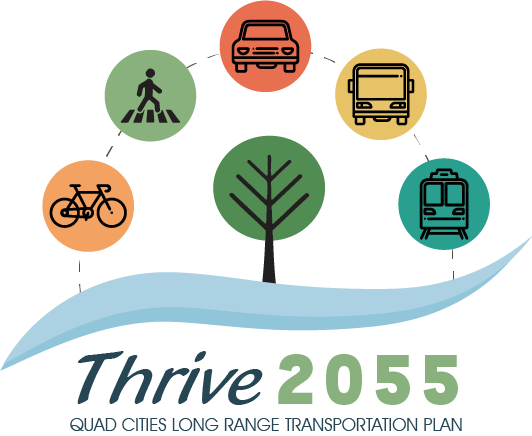 March 26, 2014 – Denise Bulat, Executive Director reported the Environmental Protection Agency (EPA) is undertaking a reconsideration of the 2008 National Ambient Air Quality Standard (NAAQS) for ozone in the range of 0.070 to 0.060 parts per million (ppm). EPA’s proposed range would result in a large portion of the United States being classified as nonattainment. Lowering the 0.075 ppm standard to the lower end of the proposed range of 0.060 ppm would result in almost tripling the number of counties being designated in non-attainment in the U.S. The National Association of Counties (NACO) has determined that 96% and 76% of current monitors would fail at the 0.060 and 0.070 ppm standards, respectively (compared to 48% at the 0.075 ppm standard). All monitored areas in Iowa and Illinois would be classified as non-attainment if the 0.060 ppm standard were adopted. All but six of the 51 monitors in Iowa and Illinois would be in non-attainment at a standard of 0.065 ppm.
March 26, 2014 – Denise Bulat, Executive Director reported the Environmental Protection Agency (EPA) is undertaking a reconsideration of the 2008 National Ambient Air Quality Standard (NAAQS) for ozone in the range of 0.070 to 0.060 parts per million (ppm). EPA’s proposed range would result in a large portion of the United States being classified as nonattainment. Lowering the 0.075 ppm standard to the lower end of the proposed range of 0.060 ppm would result in almost tripling the number of counties being designated in non-attainment in the U.S. The National Association of Counties (NACO) has determined that 96% and 76% of current monitors would fail at the 0.060 and 0.070 ppm standards, respectively (compared to 48% at the 0.075 ppm standard). All monitored areas in Iowa and Illinois would be classified as non-attainment if the 0.060 ppm standard were adopted. All but six of the 51 monitors in Iowa and Illinois would be in non-attainment at a standard of 0.065 ppm.
Few of the total U.S. counties are monitored. Locations without monitors such as smaller urban and rural areas, would continue to be able to attract businesses and industries following the change in the standard. The existence of monitors themselves creates a system of advantaged and disadvantaged communities, counties, and states.
Biogenic sources of ozone and its precursors should be examined because plants give off volatile organic compounds (VOCs), which is a precursor to ozone. Agricultural fields in very rural areas are reading in non-attainment. With the Midwest as one of the world’s greatest sources of food crop production, the very nature of this agricultural role may be contributing to the region’s higher background ozone levels.
Air emission reductions have been occurring in the U.S. Significant progress has been made in reducing ozone levels and improving air quality in general. Between 1980 and 2012, total emissions in tons of the six principal air pollutants dropped by over 65% and measured ambient concentrations of ozone dropped 25% since 1980 (see http://www.epa.gov/airtrends/aqtrends.html). In addition, Tier 3 vehicle emission and fuel standards will take effect in 2017 and will achieve significant reductions in air emissions through cleaner fuels and vehicles. These federal level programs have a greater potential to improve air quality in the nation.
 Bi-State Region local governments have demonstrated their commitment to clean air and the protection of health. The Bi-State Region will continue to educate the public and encourage voluntary measures of local governments, businesses, and individuals to improve air quality, similar to efforts that have been established over the past 10 years for ozone through the Bi-State Air Quality Task Force. Activities have included: “Aware of Air” brochure development and dissemination, alternative fuels workshop, teacher training workshop, travel demand management information, newspaper advertisements, the development of a voluntary ozone flex plan, CNG buses and biodiesel buses, trip chaining television advertisements, public and private employer outreach projects and meetings, QC Transit web portal development, transit marketing and ambassador program and fair, a “Make Indoor Air Quality Visible” campaign, and the Alcoa “Make an Impact” campaign. An area-wide pledge program to commit to projects and activities that improve air quality was launched in 2010.
Bi-State Region local governments have demonstrated their commitment to clean air and the protection of health. The Bi-State Region will continue to educate the public and encourage voluntary measures of local governments, businesses, and individuals to improve air quality, similar to efforts that have been established over the past 10 years for ozone through the Bi-State Air Quality Task Force. Activities have included: “Aware of Air” brochure development and dissemination, alternative fuels workshop, teacher training workshop, travel demand management information, newspaper advertisements, the development of a voluntary ozone flex plan, CNG buses and biodiesel buses, trip chaining television advertisements, public and private employer outreach projects and meetings, QC Transit web portal development, transit marketing and ambassador program and fair, a “Make Indoor Air Quality Visible” campaign, and the Alcoa “Make an Impact” campaign. An area-wide pledge program to commit to projects and activities that improve air quality was launched in 2010.


